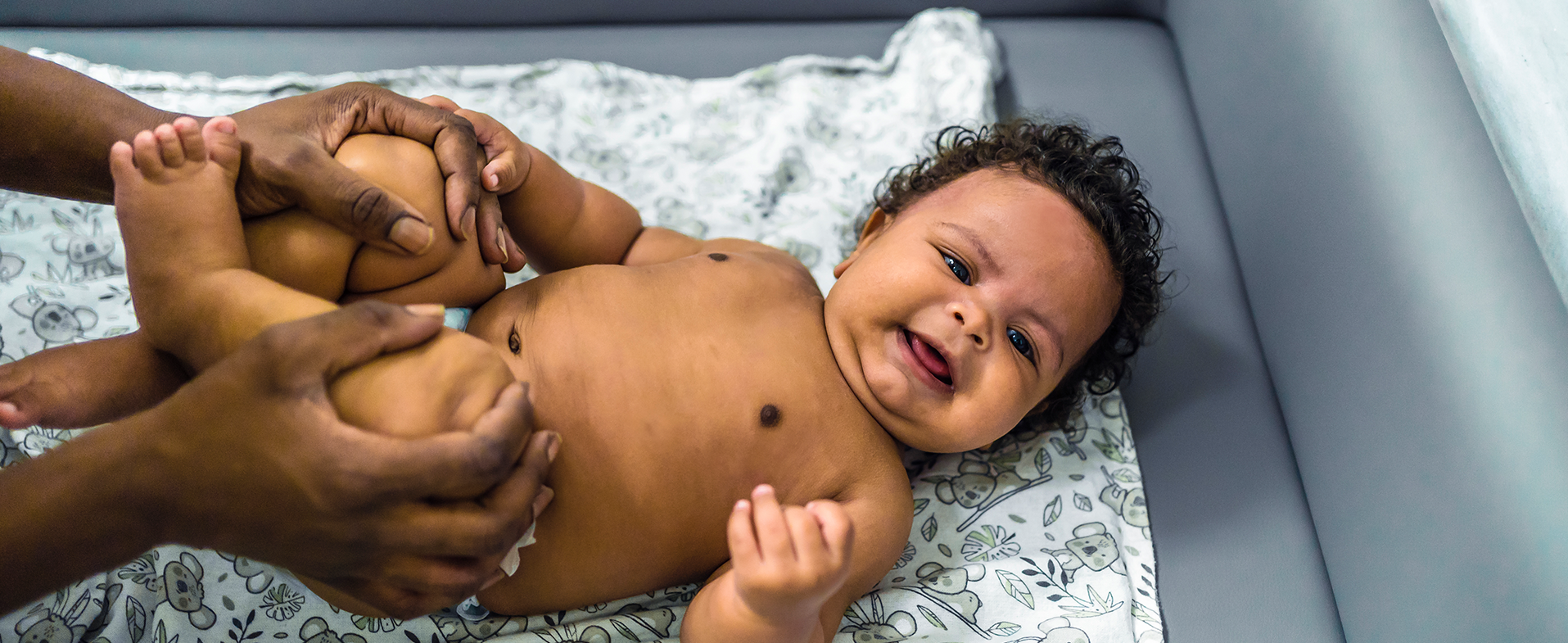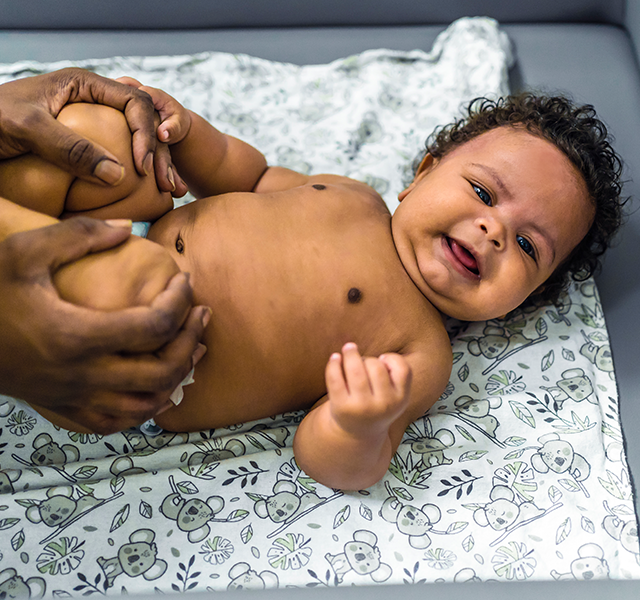Becoming a parent means getting comfortable with things you never expected to do, from wiping runny noses with your bare hand to falling asleep on the nursery floor. And then there’s all the time you spend thinking—and talking—about poop.
“Parents are often surprised by the variety of colors in their baby’s diaper,” says Seth Iskowitz, M.D., a pediatric gastroenterologist at Henry Ford Health. Within that stinky rainbow is a range of colors that are totally normal—and a couple that are potentially problematic. Dr. Iskowitz shares what to expect from baby poo hues.
Baby Bowel Movements
Within a day or two after they’re born, babies pass their first bowel movement, known as meconium. This poop is made up of materials that the baby swallowed in the womb, including cells, bile and amniotic fluid. “It’s usually thick, sticky and dark green—sometimes almost black—in color,” Dr. Iskowitz says. “But it should last only a couple of days.”
Soon after that, things take a dramatic turn. “Once the baby starts feeding on breastmilk or formula, the stool develops a much looser consistency, sometimes described as a ‘seedy’ texture,” he says. “And color can vary a lot. Anything in the brown, green, orange or yellow range is totally normal.”
If you’re breastfeeding, the foods you eat can affect your baby’s poop, too. That’s one reason a baby’s stool color can change from day to day.

Need A Pediatric Gastroenterologist?
Baby Poop After Starting Solids
Babies usually start eating solid foods between 4 and 6 months old. As you’d expect, their poops change accordingly, typically becoming firmer—and more variable.
“Whenever a parent asks about a strange stool color, my first question is, ‘What did they eat?’” Dr. Iskowitz says.
Many fruits and veggies, for instance, can cause the stool to look dark or reddish. Foods can also cause other surprises. Some parents have expressed concern about parasites in their baby’s stool, Dr. Iskowitz says. In fact, what they feared was worms turned out to be the fibrous, squiggly strings from a banana.
Still, if something looks off, it never hurts to reach out to your pediatrician. “Take a picture and show your doctor,” he adds. “In this case, a picture really is worth a thousand words.”
Colors of Concern: White, Red and Black
While shades of tan and yellow are normal, some hues are a possible sign that there might be a problem. After all, poop and health often go hand in hand.
Stools that are white, red or black could signal a problem that needs further attention, Dr. Iskowitz says.
White poop
Bile, which is made in the liver, is what gives poop its pigment. When babies have a blockage in their biliary system, it can lead to poops that look very light gray or even white in color.
There’s probably no need to worry if your baby’s poop is a bit paler than usual, Dr. Iskowitz says. If it’s white or clay-colored, you’ll notice it looks pretty unusual. “These babies don’t poop color,” he adds. “If you notice clay-colored stools, get in touch with your pediatrician.”
Red poop
Bright red poop can be caused by blood in the stool. In some cases, the bleeding is caused by a bad diaper rash or small tears around the anus caused by constipation. Less often, bleeding can be a sign of an infection or an allergy to foods like cow’s milk.
But red poops aren’t always a sign of bleeding. Other things that can cause poop to look pink or reddish include:
- Foods like beets or watermelon
- Red dye in foods like popsicles or juice
- Medicines including some antibiotics
Black poop
Black poop can also indicate bleeding. “When there’s blood coming from higher up in the digestive tract, it can cause stool to turn black,” Dr. Iskowitz explains. But there’s a difference between black stool and baby poop that’s just darker than normal, he adds. “A lot of the time, darker poop just means the baby ate a bunch of blueberries.”
As with red poop, black stool isn’t always cause for concern. Causes of dark stools include:
- Foods like blueberries, chocolate or dark purple grapes
- Medicines that contain bismuth (such as Pepto-Bismol or Kaopectate)
- Iron supplements
Is This Poop Normal?
When it comes to dirty diapers, there is no one “normal.” Color, consistency and frequency can vary from one baby to the next—and from one diaper to the next. Some babies have bowel movements several times a day, while others go a day or two between poops. And it’s normal for things to change over time as you introduce new foods into your baby’s diet.
Bottom line: Dirty diapers, like parenting, are full of surprises. But trust your instincts. “If you notice one poop that looks weird, pay attention to the next few to look for trends,” Dr. Iskowitz says. “If you’re not sure, reach out to your pediatrician. When in doubt, it’s always okay to call.”
Reviewed by Seth Iskowitz, M.D., a pediatric gastroenterologist who sees patients at Henry Ford Medical Center - Royal Oak.



